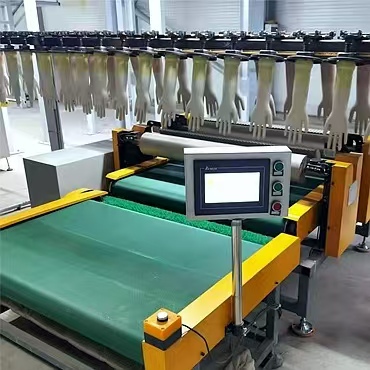Challenges in Nitrile Glove Production

Uniformity of Nitrile Latex Compound:
Nitrile rubber is the raw material for nitrile gloves, and the ratio of chemical solvents in the compound directly affects the gloves’ physical and chemical properties.
The homogeneity of the nitrile latex solution is critical; inconsistencies may lead to uneven thickness or air bubbles in the gloves.
Glove Forming Issues:
Precise control of temperature and pressure during molding is essential.
Common defects include irregular shapes, inaccurate sizing, or micro-perforations.
Quality Inspection Challenges:
Ensuring consistent compliance across batches requires rigorous testing of tensile strength, abrasion resistance, oil resistance, and chemical permeability.
Chemical property tests (e.g., sterility, regulatory compliance of chemical residues) demand high-precision equipment and skilled operators, increasing production complexity and costs.
Improvement Measures for Nitrile Glove Production
Equipment Optimization:
Introduce automated and intelligent production systems to precisely control latex uniformity and chemical additive ratios, enhancing batch-to-batch consistency.
Process Parameter Refinement:
Adjust molding parameters (temperature, pressure, time) based on iterative quality assessments. For example:
If gloves exhibit stickiness or tearing, increase vulcanization temperature (typically 100–130°C) or duration (5–10 minutes).
Modify vulcanization formulations (e.g., higher sulfur or accelerator content).
Enhanced Quality Control:

Deploy vision inspection systems for efficient defect detection.
Implement real-time process monitoring to promptly identify and rectify production deviations.




